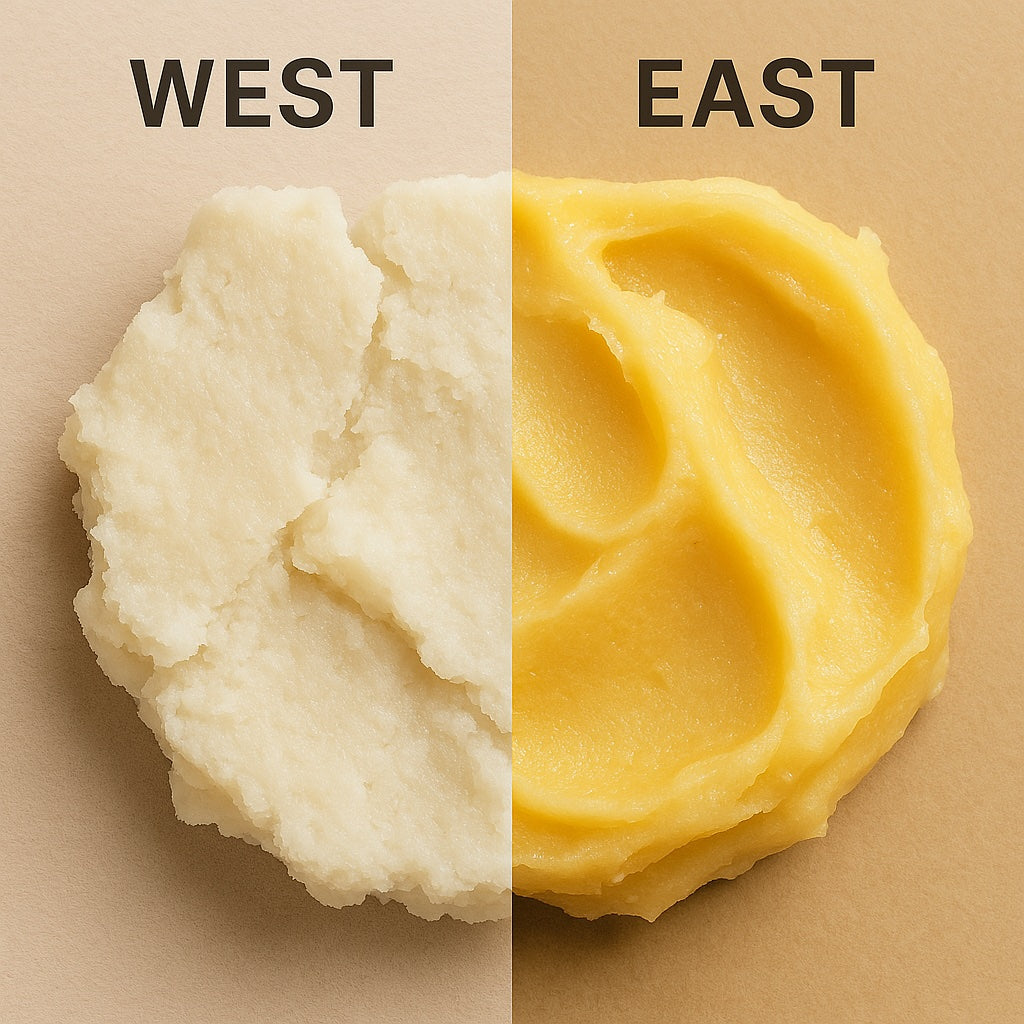
East vs West: What Origin Really Means for Your Shea Butter
Share
How Nilotica shea butter from East Africa differs from Paradoxa shea butter from West Africa
Different origins
Nilotica Shea Butter comes from the Vitellaria Nilotica shea tree, which is different from the Vitellaria Paradoxa tree found in West Africa.
This difference results in specific characteristics for each of these butters. The differences relate to consistency, flavour (it is also a food product), fragrance and fatty acid composition. One or the other of these origins is used depending on what is expected of it (skin care, hair care, etc.).
Softer, less greasy, less oily
The Nilotica shea tree grows mainly in the regions of the Nile (southern Sudan, northern Uganda, the Amhara province in Ethiopia...), hence its name. It is softer and less greasy than West African shea butter and has a creamier texture. Its higher oleic acid content (43-55%) makes it a 'softer' butter.
West African shea butter produced from the Paradoxa variety contains more palmitic acid (18-48%), has a stronger flavour and a "firmer" texture. Its higher fatty acid content and vitamin richness certainly give it a nourishing character for the skin, but Nilotica Shea Butter is more easily absorbed by certain skin types and is suitable for sensitive skin: Take a dab and apply it to your skin and see it literally melt on application (melting temperature around 35°C). No need to heat it up if you want to turn it into liquid, manipulate it and mix it with other oils. It can be used on its own as a massage oil.
Like an oil
The two types of vitellaria offer good results as regards to the ability to nourish and hydrate the hair, to smooth the cuticle or to reduce hair breakage. The very light fragrance, easier application and less greasy side of Nilotica Shea is more suitable for fine or delicate hair as it behaves almost like a hair oil.
Even rarer still
The availability of Nilotica shea butter has long been affected by political instability in the region (civil war in northern Uganda). Paradoxically, despite the return of peace, Nilotica shea butter is even rarer due to the declining number of trees due to their over-exploitation, deforestation and the impact of climate change.